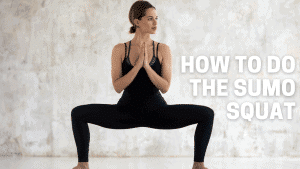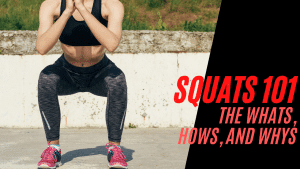What is a power clean and the muscles worked
When people think of barbell exercises, they usually associate them with being manly, hardcore, or a professional weightlifter. While it is generally true, most barbell exercises are not exclusively for men nor are they only reserved for powerlifters anymore. As barbell exercises evolve, weightlifting became less of a strictly Olympic sport and more of an inclusive full-body exercise that can be performed by anyone determined enough regardless of sex and athletic preference.
One of the most complex yet rewarding lifts you can do is the power clean. However, this exercise is considered advanced so you must know what you are getting yourself into before including it in your workout routine. So if you want to get to know the power clean more, keep scrolling.
What is a power clean?
The power clean is an advanced weight training exercise that requires coordination among various muscle groups to accomplish complex movements with high precision. During this exercise, the ankle, knee, and hip joints are trained simultaneously as fast-twitch muscle fibers are recruited to produce quick yet explosive movements.
Given the power clean’s complexity, consistent training is necessary to master proper form and accurate movement throughout the exercise. As a result, your motion becomes more precise, and eventually, you will be able to effectively target your core, quads, hamstrings, calves, and glutes as the power clean’s prime movers while your back, traps, shoulders, and arms provide support and stability for the weight.
But even though the power clean is an ideal exercise to engage several muscle groups in one powerful move, do not make the mistake of overloading the barbell. Remember that the key to a successful rep is a quick and explosive movement, something that can be a huge challenge if you load the barbell with more than what you can handle.
Moreover, mastery of the power clean is no easy feat. It can take weeks, even months, before you do it without making any mistakes. And since this is such a technical exercise, it would be easier for you to progress to the power clean if you first master exercises that utilize large muscle movements such as deadlifts, box jumps, and kettlebell swings.
How to power clean
The power clean has five phases which are composed of the movements from the starting position until you reach the power position. To know what these phases are, read on.
Phase I: The set-up
- Begin by standing with your feet hip-width apart and under a loaded barbell.
- Make sure the barbell is close to your shins before reaching down to grab the bar with an overhand grip and positioning your hands shoulder-width apart.
- Lower your butt and bring your chest out as you retract your shoulders and brace your core.
- Put your head in a neutral position and keep looking straight ahead and make sure to rotate your elbows out to the sides while keeping your arms straight.
Phase II: The first pull
- Lift the bar off the ground by extending your legs with great power but make sure that your spine is still in a neutral position and your chest is still sticking out as you do so.
- During this phase, the bar path should be in a straight vertical line contrary to the deadlift where you bring the bar towards you.
Phase III: The scoop and second pull
- Now that the bar is above your knees, it is time to scoop. During the scoop, you bring your torso into a vertical position then slightly bend your knees to prepare yourself for the most powerful part of the exercise—the second pull.
- Once you are in position, jump with great intensity via triple extension. This is a move that requires you to fully engage your hip, knee, and ankle joints to power the jump.
- As you jump, shrug the bar with your shoulders while keeping it as close as possible to your body.
Phase IV: The catch
- To mimic a catching movement, drop into a quarter squat position in one swift motion while maintaining a straight back.
- Then bring your elbows forward, with your fingertips now placed under the bar in a racked position so that the bar is caught across the front of your shoulders.
- Stand up straight.
Phase V: The drop
- Unwind your elbows and let the bar come off your shoulders.
- Using your arms, control the bar path and speed as it descends.
- Catch the bar on your thighs near your hips then squat down to absorb the impact.
Reasons why you should do the power clean
Develops muscles
As previously mentioned, the power clean engages almost all the major muscle groups of the body, but what it hits hard the most is the posterior chain. As a result, the calves, glutes, hamstrings, and back become well-developed, and not only are they defined and toned, but their strength is significantly improved as well.
Enhances explosiveness of movement
Nothing can improve the explosiveness of your movement the same way a power clean does. From just the first pull, you are already building your explosiveness, and when you take into account the rest of the movement, you get a combination of actions that help build general strength and speed that give you more power and explosive potential.
Burns calories and fat
The power clean is highly effective in burning calories and body fat to help you achieve a toned and well-defined physique. However, to get optimal results, you should perform only a few reps of the power clean because more reps mean more chances of sabotaging your form which can effectively defeat the purpose of the exercise.
Improves grip strength
Because the power clean involves moving heavy weights at high velocities, your grip strength can also massively improve over time as you consistently do this exercise.
Power clean mistakes to avoid
Improper feet position at landing
Landing with your feet too wide limits hip mobility and makes dropping under the bar quite challenging. To avoid this, land with your feet in the same position as you would during a front squat.
Not engaging the right muscles
An engaged back and core ensures a reduced risk of injury during a power clean, but if you are not maintaining a neutral spine throughout the exercise, you are essentially opening up yourself to injuries. To avoid this, retract your shoulders and brace your core as if you are about to punch. Remember that core stability protects your back from injuries, so if you want to protect yourself, recruit your core muscles.
No matter how tempting it is to let your back arch when doing the first pull especially with too much weight, remain focused and be conscious about keeping your back straight and strong throughout the exercise.
Also, refrain from overloading the barbell just for the sake of progress. What good is a power clean if you are unable to do it precisely because of too much weight?
Not catching the bar with your shoulders
One rookie mistake most beginners make is catching the bar with their forearms. This is a huge no-no because catching the bar this way greatly limits the amount of weight you can lift. Not only that but it also puts unnecessary stress on your joints, making each rep more challenging than it already is.
To avoid this, try using an unloaded bar instead then practice snapping your elbows through and catching the bar across your shoulders before adding any weight to it. This way, you are letting your muscles get used to the form and movement first which will eventually make it easier for you to progress with weights.
Doing too many reps too fast
The power clean is meant to train your body to use as much force as quickly as possible, not as many, so ideally you should not be aiming to finish tens of reps. In fact, you should only perform a maximum of 5 reps per set. Doing more than that will exhaust your muscles too quickly and sabotage your form, technique, movement, and power output.
It is for the same reason that you must pause briefly between reps to re-establish your form so that you will be able to perform the next rep in one fluid, precise motion.
Incorrect stance and posture
Placing your feet too wide in the starting position may feel more comfortable and give you the illusion of stability, but that is incorrect and not a good way to begin a power clean. Always remember that your feet should remain hip-width apart throughout the exercise, meaning they should be placed that way from the starting position until the landing.
Aside from feet placement, posture is another thing power clean newbies get wrong. Keep in mind that your focus is forward and shoulders should be relaxed so always get into your starting posture with a straight back and your hips behind your shoulders in a quarter squat.
Lastly, the bar should not be too low for you to grab to prevent your back from arching. This usually happens when you load the barbell with smaller weight plates which puts the bar closer to the ground. To avoid this, use weight plates that are bigger—but not necessarily heavier—so that the bar is at a height that will keep the spine in a neutral position when you grab it.



